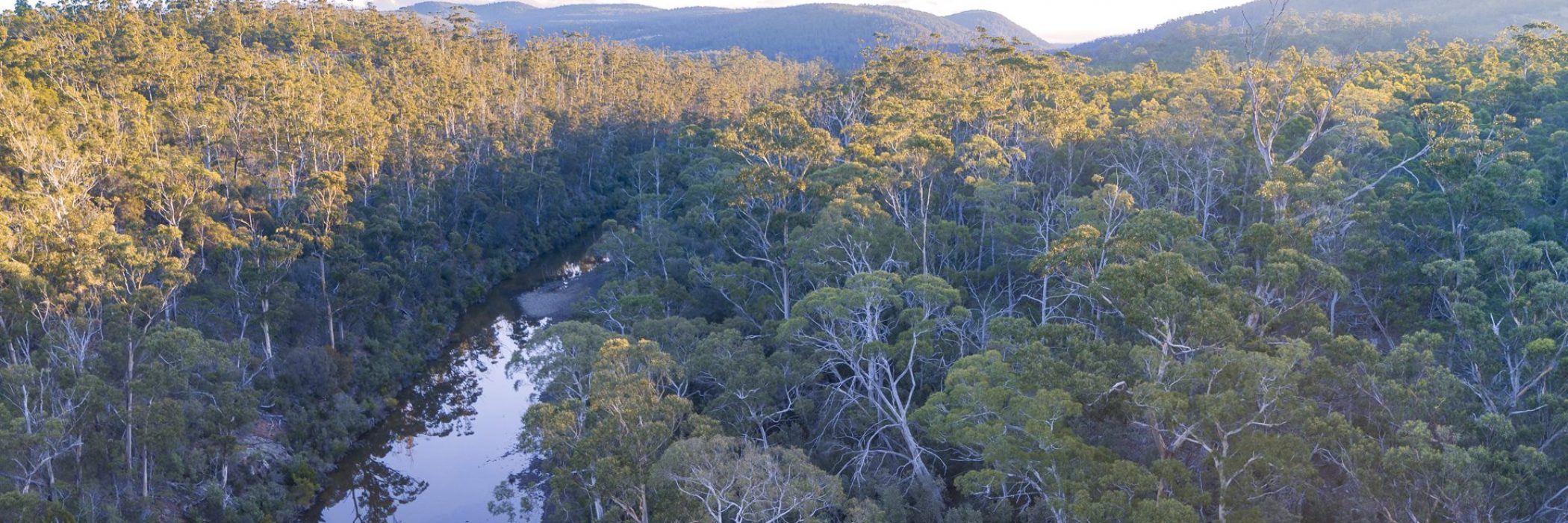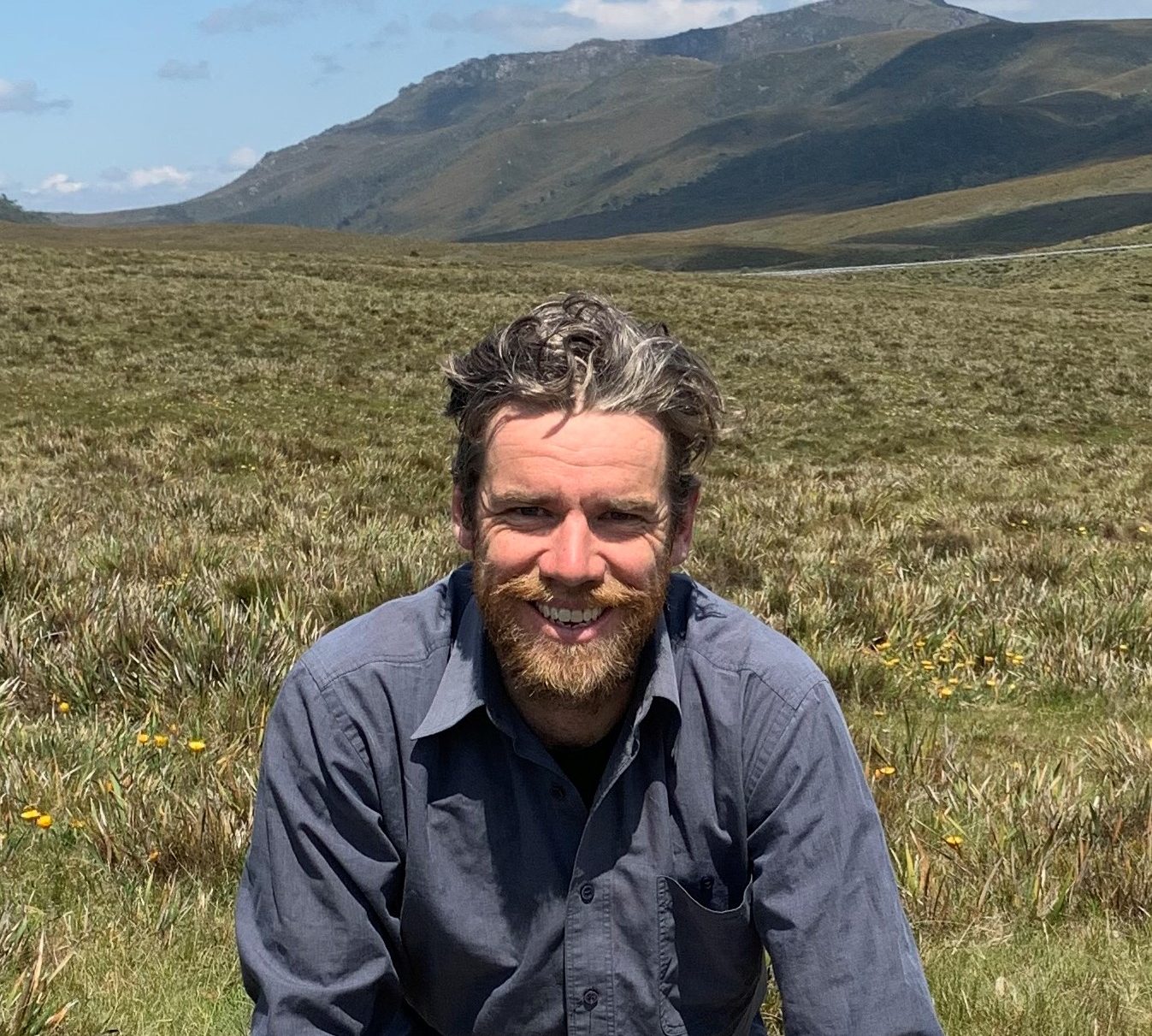Restoring the balance at Little Swanport
Like so many areas on the east coast of Tasmania, TLC’s Little Swanport Reserve has been subject to many landscape-altering disturbances over the last century. Satellite imagery shows that more than half of the reserve was logged in the early 1990s. While some of the logged forest was left to regenerate, large areas were converted to paddock and grazed by sheep until the early 2010s.
Apart from the occasional stand of remnant eucalypts there are no residual trees across the former paddocks, which make up about 50 hectares of the reserve. It is likely that Tasmanian blue gum (Eucalyptus globulus) would have been the dominant species in these areas, based on surrounding vegetation and the large-diameter stumps left from late 20th century logging.
With a decline in farming intensity over the last 10 to 20 years, most of the paddocks have been ‘invaded’ by black wattle (Acacia mearnsii). This native pioneer species has formed dense thickets, with densities up to 2,500 stems per hectare in some areas. Very few eucalypts have regenerated, except for the occasional saplings around the canopy of remnant trees. The understorey is very simplified, consisting of a limited number of grazing-tolerant native grasses and groundcovers.
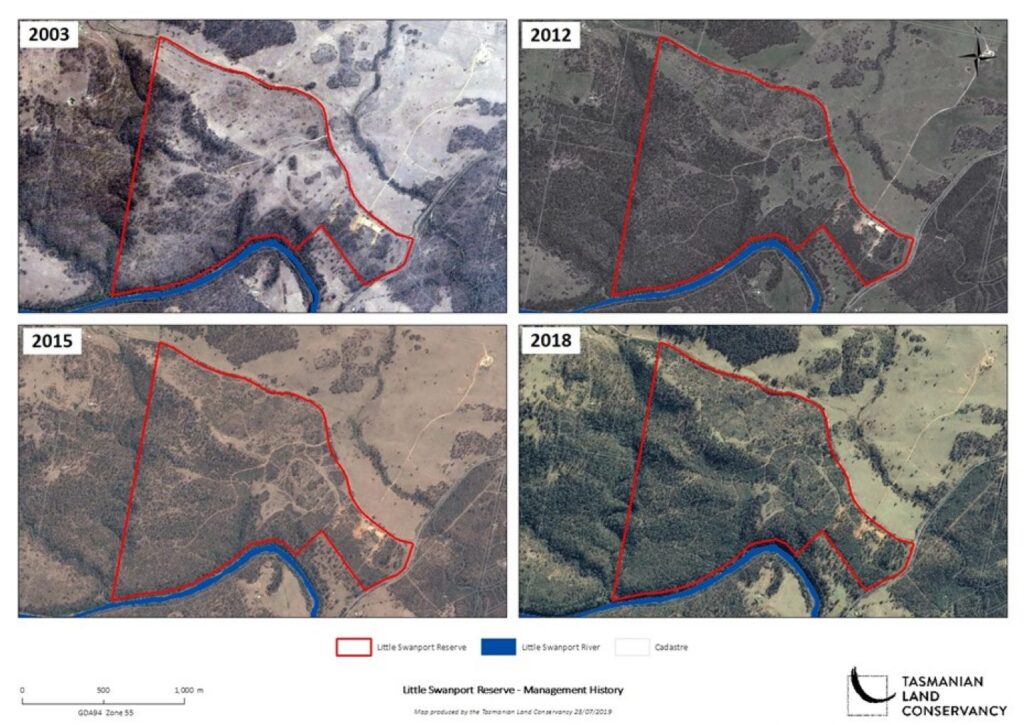
A novel approach to restoration
While visiting Little Swanport Reserve in 2019, researcher and long-time TLC supporter Chris Harwood observed the lack of eucalypt regeneration in the former paddock areas. Chris thought there was a good case for planting some eucalypts into these areas, using a novel approach that invests heavily in a relatively small number of planted seedlings. He pitched his idea to TLC science team, who were also thinking about restoration approaches for this area – which seeded the idea for a collaborative project.
Chris, together with Prof. Brad Potts, collected seed from a number of E. globulus trees at Little Swanport Reserve in spring 2019, which Brad then grew into seedlings for planting. TLC ecologist Joe Quarmby then developed a ‘state-and-transition’ model to predict the alternate states that the vegetation may shift to under different management scenarios.
Then, in August 2020 we set up an experimental trial that involved planting the E. globulus seedlings into nine treatment plots, in which A. mearnsii was ‘thinned’ to different stem densities. E. globulus seedlings were allocated to the treatment plots based on genetic isotypes. The seedlings were planted into deeply cultivated holes with water-retaining gel and fertilizer. Wire mesh tree-guards were placed around each seedling to protect them from marsupial grazing.
Changes in the vegetation within the various treatment plots will be monitored over time. We will also monitor the growth of the E. globulus seedlings in the plots to see how much effect competition from A. mearnsii has on tree establishment. We also want to include birds and invertebrates in the study, due to their functional role in ecosystem dynamics.
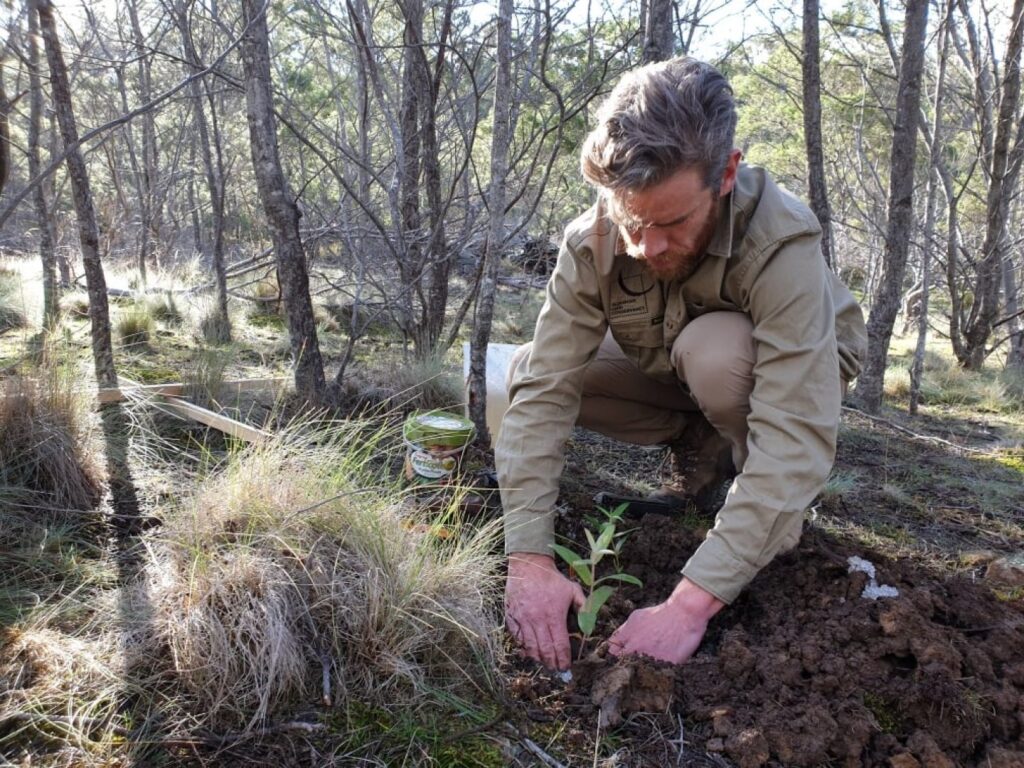
Why not just leave it alone and let nature take its course?
Our state and transition modelling predicts that the regrowth A. mearnsii vegetation has crossed an ecological threshold and is unlikely to return to its reference state (E. globulus forest) without intervention. More than likely, it will remain in an altered state dominated by A. mearnsii with a species-poor understorey.
Previous research has shown that E. globulus seed falls almost entirely within 15 m of mature trees. Based on this, it is expected to take a very long time for E. globulus seed to reach some areas, where the nearest seed-bearing tree can be more than 50 metres away. Further to this, E. globulus seedlings are known to be sensitive to competition and will have a hard time establishing under the dense cover of A. mearnsii. So, unless there is some assisted regeneration, it will take a very long time – possibly centuries – for these areas to be eucalypt forest again. Even then, the vegetation is unlikely to have the same functional and structural complexity as undisturbed forest.
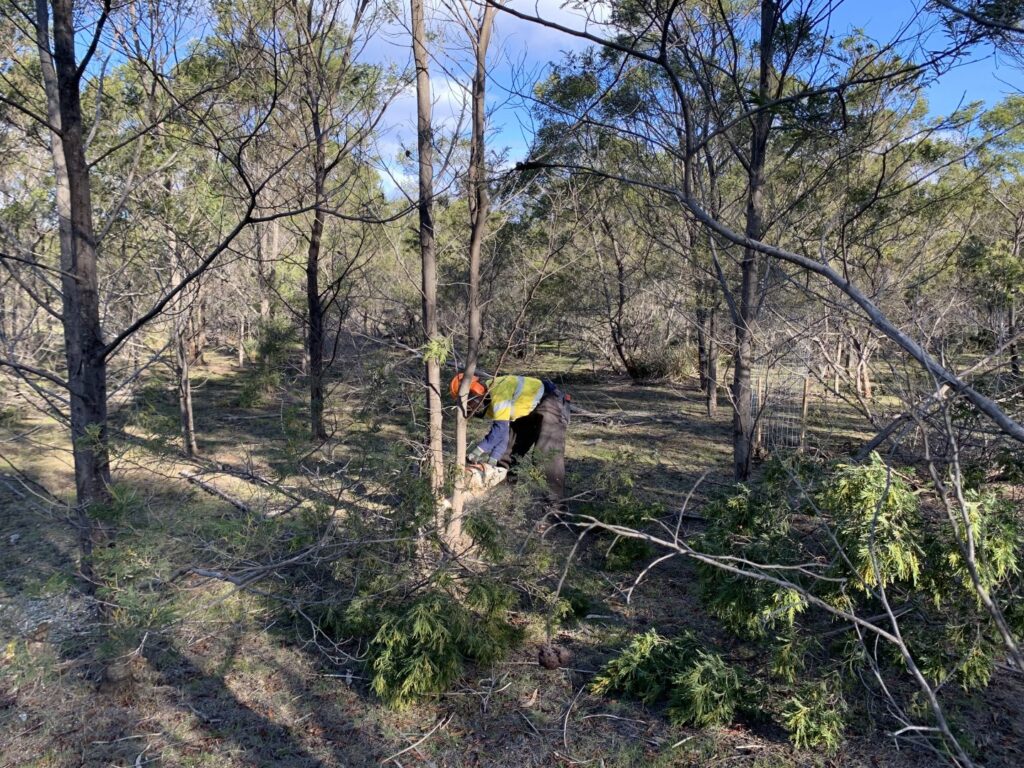
A matter of urgency
One of the advantages of our active management approach, is that habitat for the critically endangered swift parrot will be restored within the next few decades, when they urgently need it. It is anticipated that the open-grown trees will develop broad crowns, and come to heavy flowering much earlier than those in dense regrowth. Also, E. globulus dry forest is listed as a threatened vegetation community – so getting the trees back in the landscape sooner rather than later is a high priority.
We also recognise the value of providing structurally diverse habitat for fauna, so we are not planting uniformly across the site. Instead will are leaving some areas of A. mearnsii woodland, which in itself provides good habitat for insects, especially ants, bees, and butterflies, including the rare Tasmanian hairstreak.
Similarly, there are some areas of open grassland areas covered by kangaroo grass (Themeda triandra), which will be maintained. Lowland Themeda grassland is listed as a nationally threatened ecological community, so we will be actively managing these areas to prevent tree and shrub encroachment. These open grasslands also provide excellent foraging habitat for small mammals, including bandicoots. If left alone, these grasslands will also be invaded by A. mearnsii in the next few decades.
Active management is often inherent in the custodianship of areas with threatened species and threatened ecological communities. This is especially the case in altered and fragmented landscapes, where ecological resilience is diminished. TLC is working to restore the balance at Little Swanport Reserve, which will hopefully provide a test case for actively regenerating threatened ecological communities.
TLC would like to acknowledge the contribution of Chris Harwood and Prof. Brad Potts to this project.
Banner photo: Rob Blakers



